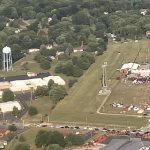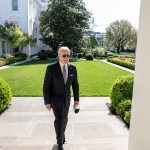Recent revelations regarding the Secret Service’s security measures for the Trump rally in Butler, Pennsylvania, on July 13 have raised serious concerns. The event, which ended in chaos when former President Donald Trump was shot in the ear, tragically resulted in the death of Corey Comperatore and injuries to two other individuals. With new details emerging, it seems the Secret Service’s handling of security was less a display of professionalism and more a textbook case of negligence.
Firstly, it’s come to light that the Secret Service had previously misled the public about the resources allocated for Trump’s event. While they once denied any shortcomings, reports show that they failed to provide necessary personnel when asked for assistance. In stark contrast, 12 agents were assigned to protect Jill Biden at a separate event, leaving Trump’s rally woefully under-resourced. Given that there was an identified threat against Trump from Iranian sources, this disparity in personnel allocation not only raises eyebrows but also prompts serious questions about their accountability and capabilities.
WHAT! pic.twitter.com/WCpabHJHOf
— Karli Bonne’ 🇺🇸 (@KarluskaP) July 21, 2024
The chaos didn’t end there. According to a preliminary report from Senator Ron Johnson, alarming details about the Secret Service’s operations before and during the incident have surfaced. The agency did not attend a critical security briefing held just hours before the rally, where local law enforcement, including SWAT teams, were making plans to ensure a safe event. Instead of having a unified communication strategy, local law enforcement reportedly found themselves siloed, lacking direct and frequent contact with the Secret Service. This breakdown in coordination undoubtedly contributed to the confusion and chaos when the shooting occurred.
Further compounding concerns, local authorities were aware of potential threats but were told that the Secret Service was briefed on these warnings. Still, they were nowhere to be found when it mattered most. Following the incident, it was revealed that the Secret Service initially had no plans to deploy snipers, which, if true, raises an alarming question: what would have been the outcome if they had not scrambled to respond after the shots were fired? The possibility that more lives could have been lost due to the Secret Service’s incompetence is all too real.
These developments paint a picture of a federal agency that has been caught flat-footed when it comes to protecting a former president facing legitimate threats. Kim Cheatle, head of the Secret Service, has some explaining to do at the upcoming hearing. With the safety of high-profile figures at stake, the expectations for security detail should be sky-high, but what has unfolded just weeks ago resembles anything but a reliable protection protocol. If this is how the Secret Service approaches security for a former president, what does that say for the general public’s safety?
With failures piling up and accountability looming, the situation is ripe for scrutiny. The Secret Service must do better, but it remains to be seen if any real changes will occur in the wake of this disastrous event, or if the agency will simply continue with its pattern of evasion and mismanagement. For the American people, particularly those who prioritize the safety and security of their leaders, this is not just politically charged—it’s a matter of life and death.




